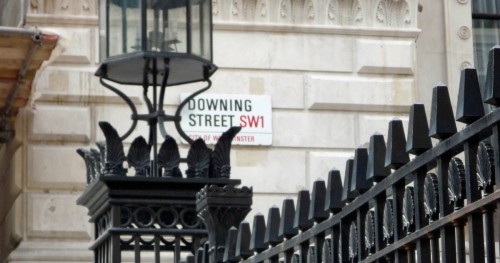Freelancers, you can’t serve two different employers at the same time

Freelancers have long been the walking-talking exception to the old-adage ‘one cannot serve two masters’ -- but what about when that service is carried out at exactly the same time and concerns exactly the same work?
Let’s frame it another way. In a world where more and more of us are jointly employed, are we now at a stage where in a nod to freelance-esque working, an individual can be employed -- whether as an employee or worker -- by two different parties but for the very same work?
An employee or worker of two employers -- for the same work, at the same time...
It’s a question worth asking, because an employment tribunal did find that yes, it is possible in the case of a taxi driver, a Mr R.Comolly, to be simultaneously an employee or worker of two employers in respect of the same work.
But be aware -- that ruling has now been overturned in an Employment Appeal Tribunal judgment which raises some interesting issues about employment/engagement by two separate engagers, and about employee/worker status, writes Roger Sinclair, legal consultant at egos.
The EAT’s judgment can be found here but for busy freelancers, I will summarise the case below.
United Taxis Ltd v Comolly, Tidman - summary
United Taxis Limited (UTL) is a taxi operator; one of its shareholders (in an effect, one if its owners) is a Mr Tidman (‘T’). And as mentioned, the tax driver is Mr Comolly (‘C’).
Well, C brought a claim against UTL and T for, inter alia, unfair dismissal -- which Comolly could only bring if an employee, and he also brought a claim for unlawful deductions from wages -- which, similarly, Comolly could only bring if he had the status of either employee or ‘worker.’
Each member-shareholder (such as T) paid a monthly subscription, in return for which the member-shareholder had access to work made available by UTL in its capacity of a licensed private hire operator. UTL used its own despatch handling system and made available its app.
Each member-shareholder could drive a taxi themself with UTL’s signage, and/or engage others to do so, provided that all such drivers were trained by and registered with UTL -- and abided by its ‘bylaws.’ Those bylaws included not using other apps to obtain work and using its Chip & PIN machine.
Who paid United Taxis Ltd drivers?
Not dissimilar to some other ‘gig economy’ employers, UTL had no involvement in how drivers received payment. Rather, the issue of payment was a matter between the member-shareholder (T for example), and the driver (C for example).
Registered with UTL, Comolly had agreed with T for the use of T’s taxi at certain times, on the basis of a split of receipts (generally 50:50). During those times, C could also do as much ‘hackney carriage’ work as he wished -- but in fact, he got some 95% of his work from UTL.
From a customer’s standpoint, passengers would contact UTL; a driver would generally be contacted via UTL’s app and would carry out the work.
Finally, UTL or the driver would then collect payment from the passenger. In this case, T would pay C; and UTL would pay T payments which had been paid by Chip & PIN.
Findings
Regarding Comolly, there was no opportunity for him to develop his own independent business, and UTL exercised tight control over its overall business.
Largely due to the latter facts in the above summary, the tribunal which first heard the case decided that Comolly was BOTH a worker of United Taxis Limited AND an employee of T.
However, both UTL and T appealed. And now, or at least according to the judgment it published last month, the EAT has laid down the following six findings:
What the EAT ruled
1. The tribunal had properly concluded that the contract between C and T was one under which C drove UTL’s passengers, and T paid C for that service -- and not (as had been suggested) one under which C hired the taxi from T in return for 50% of the gross receipts.
2. While there was a collateral contract between UTL and C, that contract did not extend to the provision of driving services by C, or the payment of C by UTL (so there was no ‘wage-work bargain’ between UTL and C).
(3) Significantly, there was no basis on which the tribunal should have found that C was simultaneously a worker of UTL and an employee of T, for the same work at the same time, under two separate contracts with two separate parties.
So, the EAT has clarified, Comolly was neither a worker nor an employee of UTL.
(4) Comolly was not carrying on his own business undertaking -- and could only provide his services personally.
(5) The degree of control exercised by T over C was insufficient to make the contract between T & C a contract of employment.
(6) Comolly fell within the statutory definition of a ‘worker’, in relation to T.
Three questions to ask to decide worker status
This case illustrates the principles that, where a contract covering the basics of payment in return for work is found, one must first ask questions which were laid out in the Ready Mixed Concrete case of 1968:
- Must the work be done by the individual, or can (s)he substitute?
- Is there sufficient control for a ‘master-servant’ relationship to arise?
- Are any of the other provisions of the contract inconsistent with a relationship of employment?
If ‘yes,’ then it seems the relationship is one which common law would regard as one of employment.
If ‘no,’ then one must consider whether or not the individual is a ‘limb (b) worker (in which case they would have ‘worker’ status):
- Must the work be done by the individual, or can (s)he substitute?
- Is the ‘other party’ a customer of a business undertaking or profession carried on by the individual?
If the work must be done by the individual, and the other party is not a customer of a business undertaking or profession carried on by the individual, then the individual must fall within the statutory definition of a ‘worker’.
'A failure to grapple with the dual employment issue'
But the significance of this case stems from the initial tribunal finding that Comolly was both things (a worker of T, and an employee of UTL), in respect of the same work at the same time.
Disagreeing, the EAT found that the tribunal ‘failed to grapple with the dual employment issue.’ The EAT judge explained, speaking of no “basis on which it [the tribunal] could properly have found that Mr Comolly was, in respect of the same work at the same time a worker (whether or not also an employee) of both UTL and T.
So it seems, as mentioned at the outset, one cannot serve two masters. Or more specifically -- that it is not currently permissible under the UK’s employment law for an individual to be employed (whether as an employee or worker) by two different parties for the same work.



Comment
Log in or create your account to react to the article.